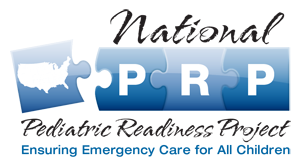Checklist & Toolkit
Disaster ED clinicians EMSC Stakeholders Hospital State Partnerships Trauma- National Pediatric Readiness Project
- About
- Assessment
- Checklist & Toolkit
- Selected Publications
- Spread the Word
- FAQs
A new data dashboard for EDs

NPRQI enables EDs to measure and analyze – in real-time and at the patient level – their progress on quality metrics.

Intended for use in conjunction with the NPRP Assessment, the NPRP Checklist and Toolkit are free and open-access resources for all ED providers (e.g. technicians, nurses, physicians, advanced practice providers and other staff) to help facilitate delivery of high-quality emergency care to all children. Both resources are based on the American Academy of Pediatrics, American College of Emergency Physicians, and Emergency Nurses Association’s 2018 joint policy statement, “Pediatric Readiness in the Emergency Department”.